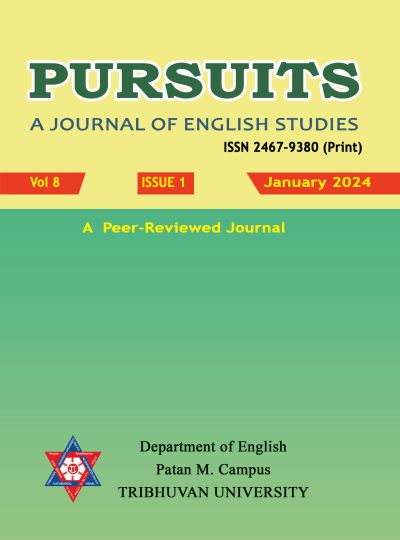Narrative Remedies: Exploring Therapeutic Expression in Phyllis Alesia Perry’s Stigmata
DOI:
https://doi.org/10.3126/pursuits.v8i1.65333Keywords:
trauma, collective memory, collective representation, scriptotherapy, healingAbstract
This research paper explores the therapeutic dimension of writing as a means of healing, with a specific focus on Phyllis Alesia Perry’s novel, Stigmata. Perry's work serves as a powerful example of how literature can be employed as a therapeutic tool for individuals navigating through trauma and adversity. The paper examines the novel's narrative structure, character development, and thematic elements, highlighting the healing potential embedded in the act of writing. By examining the protagonist's journey and the broader implications for readers, this research aims to contribute to the understanding of literature as a therapeutic medium. Although Stigmata contains various therapeutic dimensions, this paper tries to limit on the scope of scriptotherapy to reach the research end. First, the paper develops Suzette A. Henke's theory of “scriptotherapy” which is supported by Jennifer Lynne Bird’s “Narrative Writing,” and Sayantani Das Gupta and Marsha Hurst’s “Narrative Medicine” on the basis set by Jeffrey C. Alexander’s notion of the “agent of the carrier group,” Ron Eyerman’s notion of “collective representation,” and Dominick La Capra’s notion of “working through” since all these notions directly or indirectly contribute healing the traumatic wounds of people. In reading the novel, the employment of the theories helps discover how Stigmata proves to be therapeutic by analyzing and interpreting the essential and relevant textual evidence. Employment of the already produced literature by the scholars/critics will authenticate the central logic in meeting the research end.




